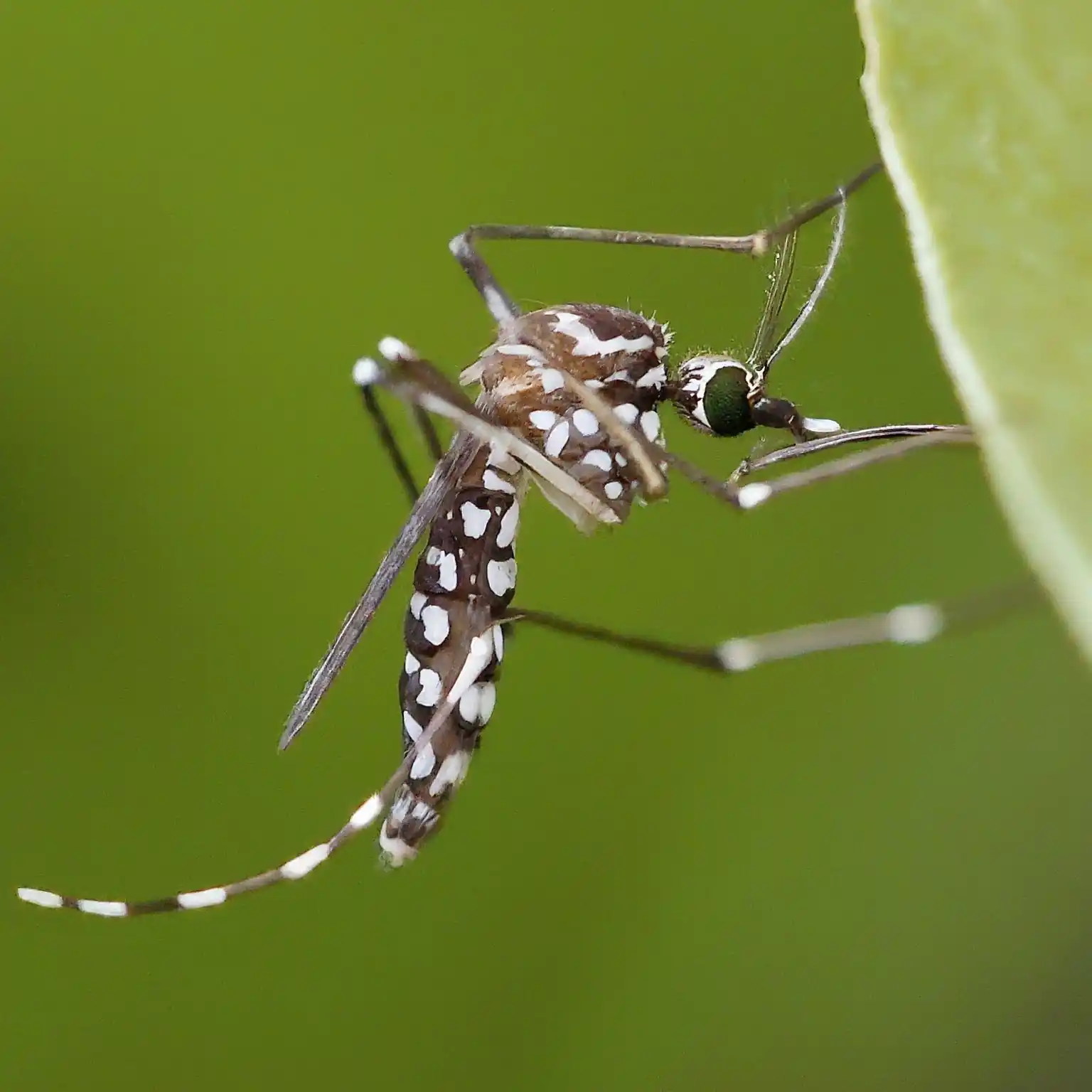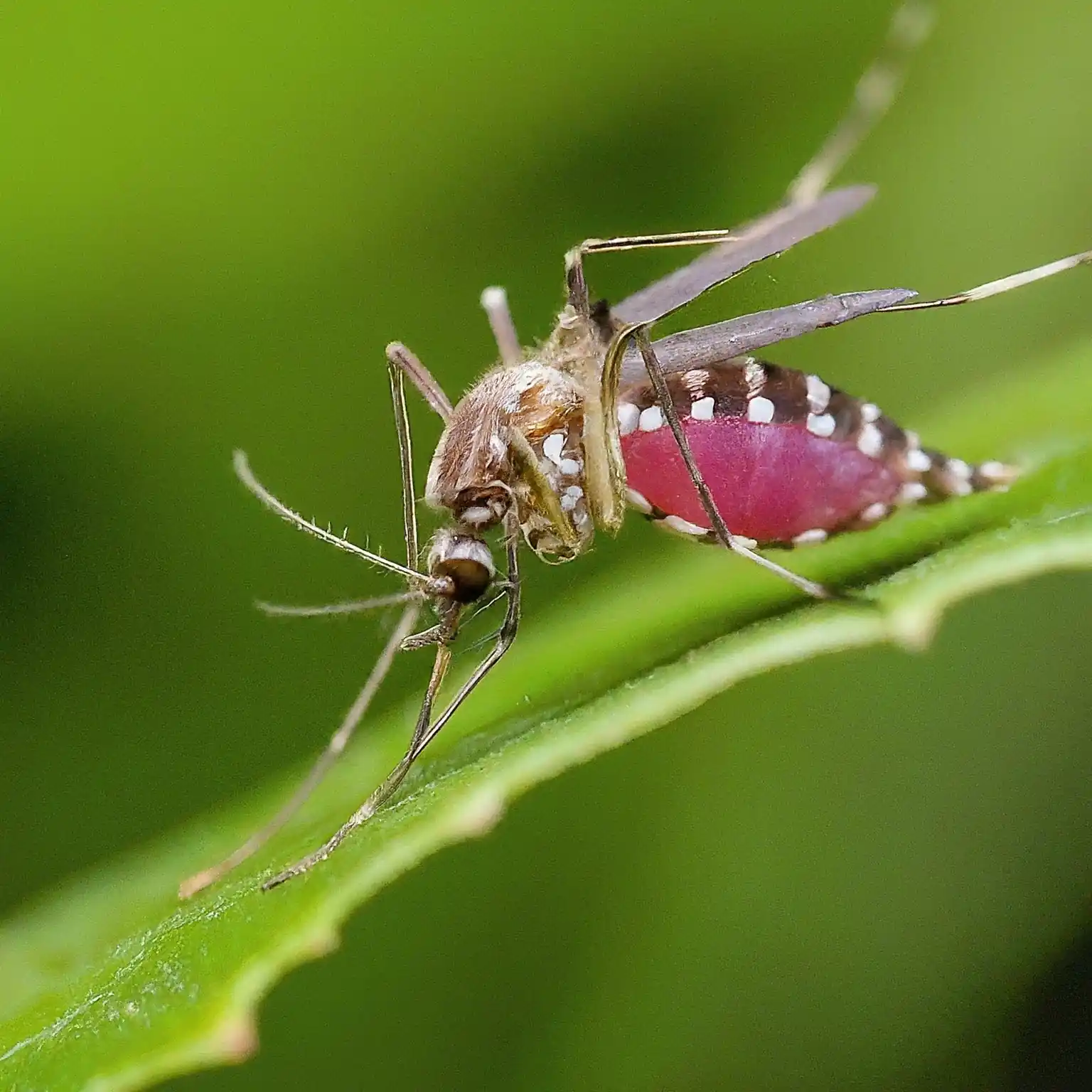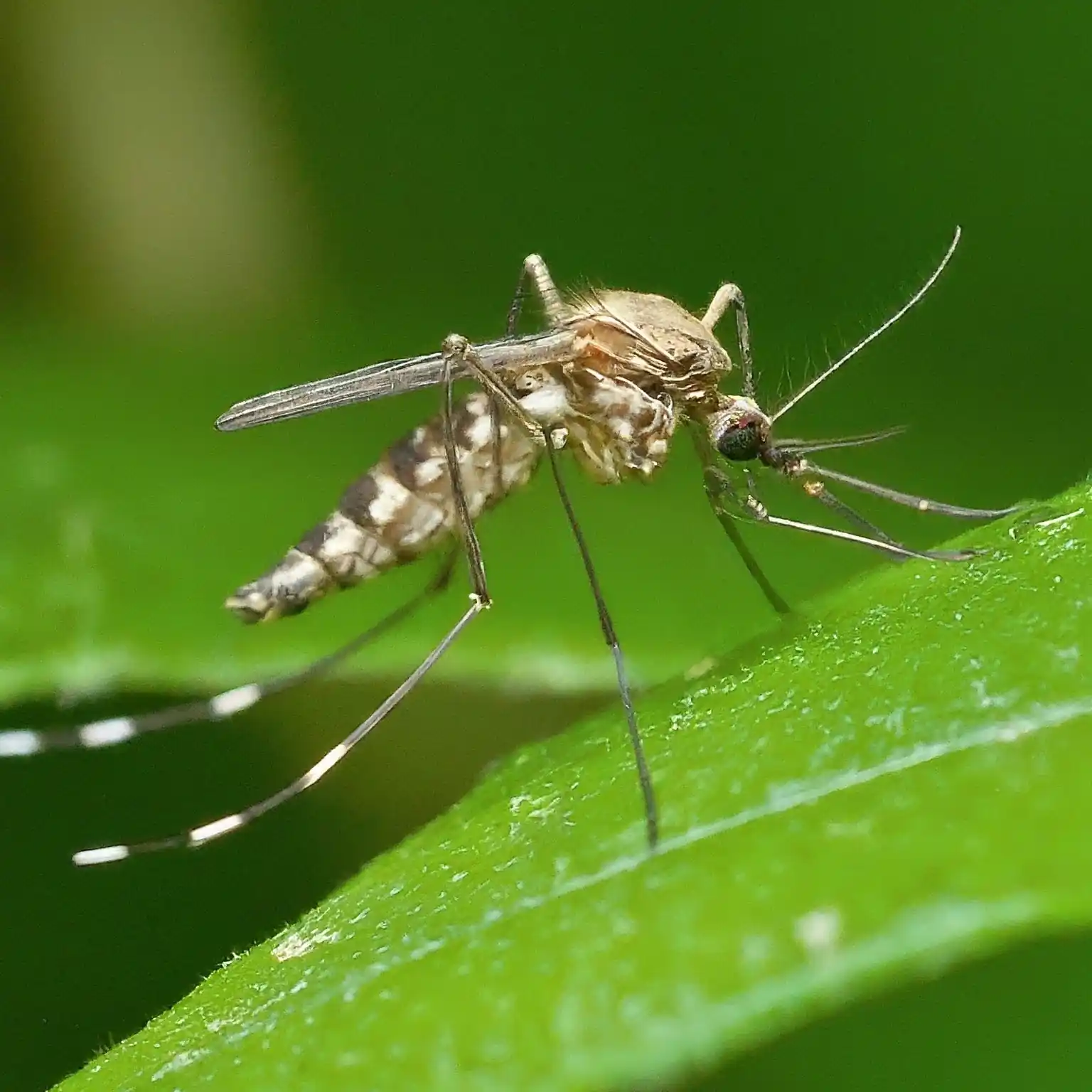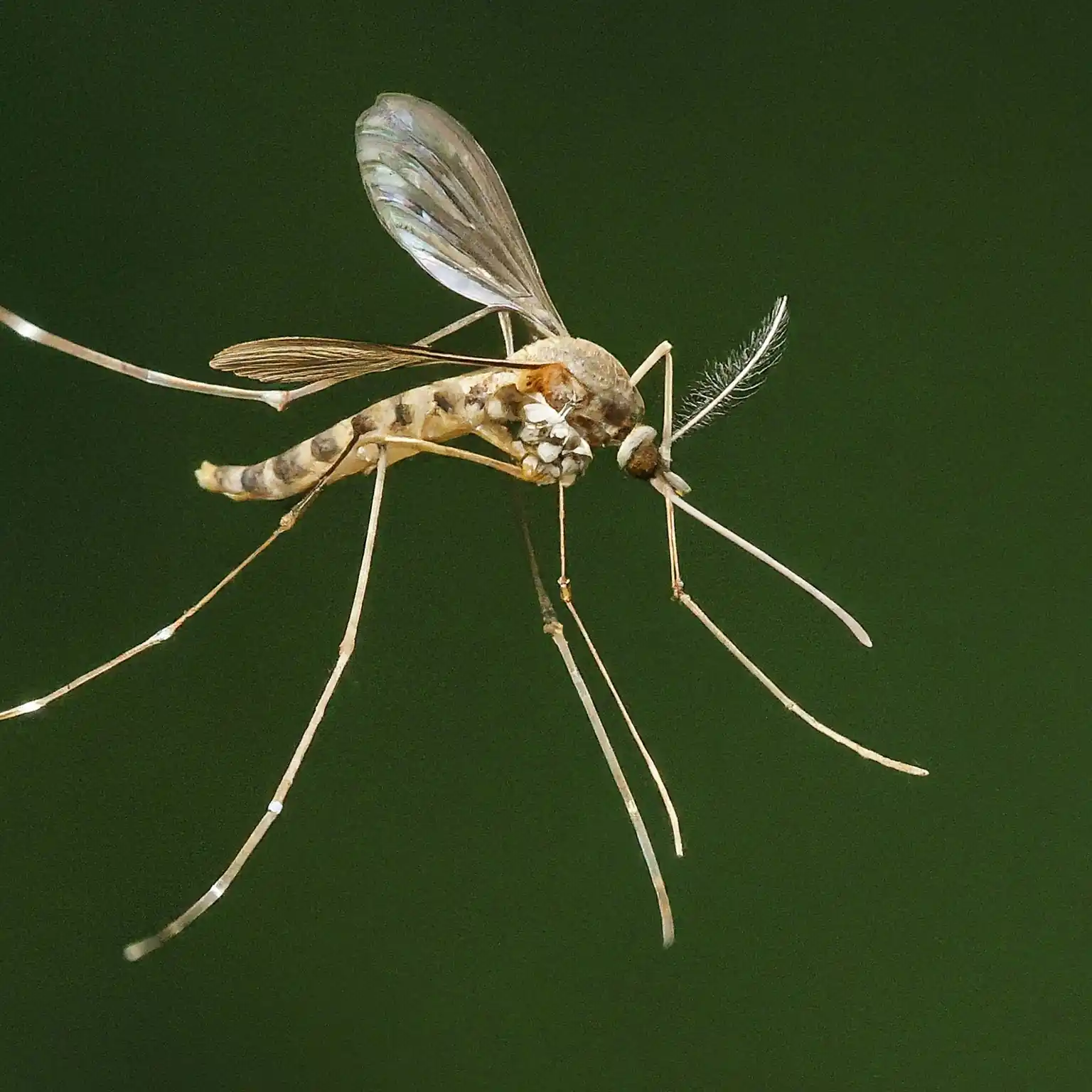Know Your Mosquitoes
Understanding the Different Types and Their Impact
Types of Mosquitoes
There are over 3,500 different species of mosquitoes in the world. These species are classified into approximately 41 genera, with the most well-known genera being Aedes, Anopheles, and Culex. Each genus contains species that have unique behaviors, habitats, and roles in disease transmission. Here are the main types:
Aedes Mosquito (Aedes Aegypti)
Aedes aegypti, also known as the yellow fever mosquito, is a species of mosquito notorious for its role in transmitting several viral diseases to humans.

Physical Characteristics
- Size: Adults are small, measuring about 4-7 mm in length.
- Color: Primarily black with distinctive white markings on their legs and a lyre-shaped pattern on the thorax (upper body).
Life Cycle
- Eggs: Females lay eggs individually on the inner walls of containers just above the waterline. The eggs can withstand drying and hatch when they are submerged in water.
- Larva: The eggs hatch into larvae (wigglers) that live in the water and feed on organic matter. They molt four times, growing larger with each molt.
- Pupa:After the fourth molt, the larvae transform into pupae (tumblers). They are comma-shaped and do not feed. During this stage, the mosquito undergoes significant development, transforming into an adult.
- Adults: The adult mosquito emerges from the pupa at the water's surface. Males typically emerge first and wait for females to mate. After mating, females seek a blood meal to develop their eggs, and the cycle begins anew.
Behavior
- Feeding Habits: Females are the only ones that bite, as they need blood for egg development. They are daytime feeders, primarily active during the morning and late afternoon.
- Breeding Habits: They prefer to lay eggs in artificial containers with stagnant water, such as flower pots, discarded tires, buckets, and birdbaths.
- Flight Range: Typically, they don't travel far from their breeding sites, usually staying within a few hundred meters.
Disease Transmission
- Dengue Fever: A debilitating illness with symptoms like high fever, severe headache, joint and muscle pain, and rash.
- Zika Virus: Primarily causes mild symptoms but can lead to severe birth defects in infants if contracted during pregnancy.
- Chikungunya: Characterized by fever, joint pain, and rash, with joint pain sometimes persisting for months or years.
- Yellow Fever: A serious illness with symptoms ranging from fever and headaches to jaundice, bleeding, and organ failure.
Anopheles Mosquito
Anopheles mosquitoes are a genus of mosquitoes notorious for their role as the primary vectors of malaria, a deadly parasitic disease that affects millions of people worldwide.

Physical Characteristics
- Size: Adults are typically medium-sized, ranging from 6 to 10 mm in length.
- Color: Most species are brownish or grayish in color, with some having pale or dark spots on their wings.
- Resting Position: Anopheles mosquitoes have a distinctive resting posture, with their bodies held at an angle to the surface, while other mosquitoes usually rest parallel to the surface.
Life Cycle
- Eggs: Females lay eggs on the surface of water. The eggs are not resistant to drying and must remain in water to hatch.
- Larva: The eggs hatch into larvae that live in water and feed on microorganisms and organic matter. They molt four times as they grow.
- Pupa: After the fourth molt, the larvae transform into pupae. During this stage, the mosquito does not feed and undergoes metamorphosis to develop into an adult.
- Adult:The adult mosquito emerges from the pupa at the water's surface. Males typically emerge first and form mating swarms. After mating, females seek a blood meal to develop their eggs, and the cycle begins anew.
Behavior
- Feeding Habits: Only female Anopheles mosquitoes bite as they need blood to develop their eggs. They are primarily active during dusk and dawn (crepuscular), although some species also bite at night.
- Breeding Habits: They lay eggs individually on the surface of water, often in natural habitats such as marshes, swamps, rice fields, and other stagnant water sources.
- Flight Range: Anopheles mosquitoes can typically fly up to 2 kilometers from their breeding sites, but this can vary depending on the species and environmental conditions.
Disease Transmission
Anopheles mosquitoes are the sole vectors of human malaria. When an infected mosquito bites a human, it injects sporozoites (the infectious stage of the parasite) into the bloodstream, which then travel to the liver and multiply. The parasites eventually infect red blood cells, leading to the characteristic symptoms of malaria, such as fever, chills, sweating, headache, and body aches.
Geographical Distribution
Anopheles mosquitoes are found worldwide, but they are most prevalent in tropical and subtropical regions where malaria transmission is highest. Different species of Anopheles are adapted to specific habitats and environmental conditions, contributing to the diverse geographical distribution of malaria.
Culex Mosquito
Culex mosquitoes are a diverse group of mosquitoes found worldwide, infamous for their role as vectors of several significant human and animal diseases.

Physical Characteristics
- Size: Adults are typically small to medium-sized, ranging from 4 to 10 mm in length.
- Color: Their color varies depending on the species, but they are often brown, grey, or black, with some having pale markings or bands on their abdomen.
- Resting Position:They usually rest with their bodies parallel to the surface.
Life Cycle
- Eggs: Females lay eggs in rafts on the water's surface. The eggs hatch into larvae within a few days.
- Larva: The larvae (wigglers) live in water and feed on organic matter and microorganisms. They molt four times as they grow.
- Pupa: After the fourth molt, the larvae transform into pupae (tumblers). Pupae do not feed and spend their time resting near the water's surface while undergoing internal development.
- Adult: The adult mosquito emerges from the pupa at the water's surface. After a few days of maturation, males and females mate, and the females seek a blood meal to initiate egg production.
Behavior
- Feeding Habits: Female Culex mosquitoes are the primary blood feeders, needing blood meals to develop their eggs. They are generally active at night (nocturnal), although some species also bite during the day or evening.
- Breeding Habits: They lay eggs in rafts on the surface of stagnant or slow-moving water. Their preferred breeding sites include ditches, ponds, marshes, puddles, old tires, and any container that holds water.
- Flight Range: Culex mosquitoes typically have a flight range of up to several kilometers, although most stay within a few hundred meters of their breeding sites.
Disease Transmission
- West Nile Virus: A viral infection that can cause mild symptoms like fever and headache, but in some cases, can lead to severe neurological complications.
- Japanese Encephalitis: A viral infection that causes inflammation of the brain and can lead to serious neurological damage.
- St. Louis Encephalitis: A viral infection that can cause fever, headache, and muscle pain, and in severe cases, encephalitis.
- Filariasis: A parasitic infection caused by thread-like worms that can cause elephantiasis (swelling of the limbs) and other health problems.
Key Points
- Culex mosquitoes are a diverse group found worldwide.
- They are vectors for several serious diseases like West Nile virus, Japanese encephalitis, and filariasis.
- They breed in stagnant or slow-moving water.
- Their life cycle includes four stages: egg, larva, pupa, and adult.
- Control efforts involve a combination of source reduction, larviciding, adulticiding, personal protection, and public education.
Geographical Distribution
Culex mosquitoes are found worldwide, except in the extreme northern and southern regions. They are widespread in urban and suburban areas, as well as rural environments.
Aedes Albopictus (Asian Tiger Mosquito)
Aedes albopictus, commonly known as the Asian Tiger Mosquito, is an invasive mosquito species native to Southeast Asia that has spread to many parts of the world. It is known for its aggressive biting behavior and ability to transmit various diseases.

Physical Characteristics
- Size: Adults are small to medium-sized, measuring about 2 to 10 mm in length.
- Color: Distinctive black and white striped pattern on its body and legs, giving it the "tiger" moniker. A single white stripe runs down the center of its back.
- Wings: Narrow, dark wings with white scales along the veins.
Life Cycle
- Eggs: Eggs are laid singly just above the waterline in containers. They can survive drying and hatch when flooded with water.
- Larva: Larvae (wigglers) live in water and feed on organic matter. They molt four times as they grow.
- Pupa: After the fourth molt, larvae transform into pupae (tumblers). They do not feed and undergo metamorphosis to develop into adults.
- Adult: Adult mosquitoes emerge from the pupae at the water's surface. Males typically emerge first and mate with females. Females then seek blood meals to produce eggs.
Behavior
- Feeding Habits: Females are aggressive daytime biters, primarily targeting humans but also feeding on other mammals and birds. They are persistent and can bite through clothing.
- Breeding Habits: They breed in small containers of stagnant water like flower pots, buckets, tires, and tree holes. This adaptability allows them to thrive in both urban and rural environments.
- Flight Range: They have a limited flight range, typically staying within a few hundred meters of their breeding sites. However, they can spread to new areas through human transportation.
Disease Transmission
- Dengue Fever: A viral infection causing high fever, severe headache, joint and muscle pain, and rash.
- Chikungunya: A viral infection characterized by fever, joint pain, headache, muscle pain, and rash.
- Zika Virus: A viral infection that usually causes mild symptoms but can lead to severe birth defects in infants if contracted during pregnancy.
- Other Viruses: Aedes albopictus has also been implicated in the transmission of other viruses like Eastern Equine Encephalitis and West Nile Virus.
Geographical Distribution
Originally from Southeast Asia, Aedes albopictus has spread globally through international trade and travel. It is now established in many parts of Asia, Africa, Europe, the Americas, and the Pacific Islands.
Culiseta Melanura(Mosquito)
Culiseta melanura, commonly known as the black-tailed mosquito, is a species of mosquito found in the eastern United States. They are medium-sized, chocolate-brown mosquitoes with a distinctive black tip on their abdomen, hence their name.

Physical Characteristics
- Size: Medium-sized, typically around 5-7mm in length.
- Color: Primarily chocolate brown, with a black tip on the abdomen.
- Wings: Transparent with scales along the veins.
- Legs: Long and slender, also covered in scales.
- Proboscis: Long and thin, used for piercing skin and sucking blood.
Habitat
Culiseta melanura larvae are found in cool, acidic freshwater habitats like swamps, floodplains, and woodland pools. They prefer areas with a pH of around 5.0.
Life Cycle
- They are multivoltine, meaning they have multiple generations per year.
- Eggs are laid in rafts on the water's surface.
- Larvae develop in the water, feeding on organic matter.
- Pupae are also aquatic, and the adult emerges from the pupa.
Feeding Habits
- Adult females primarily feed on the blood of birds, particularly songbirds. They play a crucial role in the bird-to-bird transmission of Eastern Equine Encephalitis virus (EEEV).
- They occasionally feed on other animals like reptiles and mammals, but rarely bite humans.
Medical Importance:
Culiseta melanura is a primary vector for EEEV among birds. While they rarely bite humans, other mosquito species can pick up the virus from infected birds and then transmit it to humans or horses, causing severe illness.
Key Points
Due to their habitat preferences, Culiseta melanura is difficult to control for homeowners. Mosquito control agencies often monitor wetlands and treat them if breeding is detected.
Overall, Culiseta melanura is an important species in the ecosystem, playing a role in the transmission of EEEV among birds. While they pose a minimal risk to humans directly, their role in the EEEV cycle makes them a species of concern for public health officials.
DIY Home Remedies to Control Mosquitoes!
Some Tips to Control Mosquitoes
- Lemon Eucalyptus Oil: Mix lemon eucalyptus oil with a carrier oil and apply it to your skin to repel mosquitoes.
- Lavender Oil: Use lavender oil in a diffuser or apply it to your skin to keep mosquitoes at bay.
- Peppermint Oil: Spray a mixture of peppermint oil and water around your home to repel mosquitoes.
- Cinnamon Oil: Mix cinnamon oil with water and spray it around your home or apply it to your skin.
- Neem Oil: Apply neem oil to your skin or burn neem leaves to repel mosquitoes.
- Camphor: Burn camphor in a room with closed doors and windows to drive mosquitoes away.
- Garlic: Crush garlic cloves and boil them in water. Spray this solution around your home.
- Tulsi (Holy Basil): Plant tulsi around your home or use tulsi oil to repel mosquitoes.
- Catnip Oil: Apply catnip oil to your skin to keep mosquitoes away.
- Tea Tree Oil: Use tea tree oil in a diffuser or apply it to your skin as a natural mosquito repellent.
- Soybean Oil: Apply soybean oil to your skin to repel mosquitoes.
- Apple Cider Vinegar: Mix apple cider vinegar with water and spray it around your home.
- Coffee Grounds: Sprinkle coffee grounds in stagnant water to prevent mosquito larvae from growing.
- Beer: Use beer as a bait in mosquito traps.
- Dry Ice: Place dry ice in a container to attract and trap mosquitoes.
- Essential Oil Mixture: Combine various essential oils like citronella, eucalyptus, and lavender in a spray bottle with water and use it as a repellent.
- Mosquito-Repelling Plants: Plant mosquito-repelling plants like marigolds, citronella grass, and rosemary around your home.
- Basil: Use basil plants or basil oil to repel mosquitoes.
- Vinegar Trap: Create a vinegar trap by mixing apple cider vinegar and dish soap in a container to attract and drown mosquitoes.
- Mosquito Netting: Use mosquito netting around beds and windows to keep mosquitoes out.
Pestofix Mosquitoes Control – The Solution You Need
Are mosquitoes invading your home or business? It's time to take action and reclaim your space! Contact Pestofix now to begin your journey to a mosquito-free environment. Our knowledgeable and approachable team is here to assist you with any inquiries, arrange an inspection, and provide a complimentary quote. Don't delay—secure your space today!

